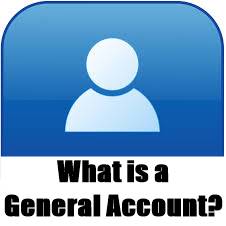
Table of Contents
General Ledger
What is a General Ledger?
A general ledger is a person who characterizes the system of record-keeping for the financial data of a company along with credit and debit account records validated by the trial balance. The general ledger offers a record for every financial transaction that happens during the life of the company.

Moreover, this person holds account information and data segregated by expenses, revenues, equity of the owners, liabilities, and assets required to prepare the financial statements of the company.
How does a General Ledger Work?
A general ledger is nothing less than the foundation of the company’s system, which is used by accountants to keep and organize financial data that is used to develop the financial statements of the company.
Transactions get posted to specific sub-ledger accounts as per the chart of accounts of the company. And then, these transactions are summarized or closed out to the general ledger. Thus, the Accountant creates a trial balance, which serves as a report for the balance available in every ledger account.
This trial balance gets checked for faults and errors and is adjusted by positing any additional required entries; thus, the financial statement is created. Basically, a general ledger is used by such companies and organizations that employ the method of double-entry bookkeeping.
This means that every financial transaction impacts two sub-ledger accounts at a minimum, and every entry has one credit and one debit transaction at least. Also known as journal entries, double-entry transactions get posted in two different columns, with credit entries being on the right and the debit entries being on the left. Also, the total of all credit and debit entries must be equal.
Talk to our investment specialist
Importance of a General Ledger
The transaction details that the general ledger contains get compiled and summarized at different levels to create a statement of cash flows, Balance Sheet, income statement, a trial balance and several other financial reports.
This assists accountants, investors, company management, analysts, and other stakeholders evaluate the performance of the company on a consistent Basis. When expenditure increases in a given period of time or the company records any other transaction that impacts the net Income, revenues, or other primary financial metrics; the financial statement data wouldn’t display the complete picture.
Also, in case of specific Accounting mistakes, it becomes important to contact the general ledger and get the details of every recorded transaction to discover the problem.
All efforts have been made to ensure the information provided here is accurate. However, no guarantees are made regarding correctness of data. Please verify with scheme information document before making any investment.












